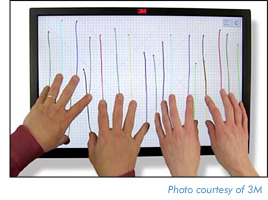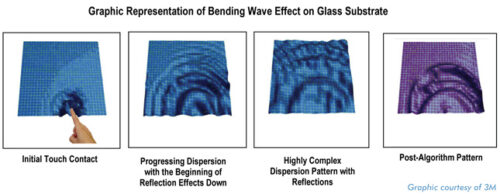It’s well known that keyboards, mice and other pointing devices are impractical in certain environments. They are fragile, vulnerable to abuse, susceptible to liquid and dust contamination, and contribute to repetitive-motion injuries.
Touch screens offer ease of use, speed, accuracy, and negate the need to become proficient with a handheld device. General Digital offers the option of equipping your LCD monitor with a variety of touch technologies, such as:
- Resistive Touch Screen (available with Sunlight Readable Circular Polarizer)
- SAW (Surface Acoustic Wave) Touch Screen
- Surface Capacitive Touch Screen
- Projected Capacitive Touch Screen
- Infrared Touch Screen
- Optical Touch Screen
- Dispersive Signal Touch (DST)
History
In 1977, we created the world’s first touch responsive industrial terminal, the VuePoint™. It didn’t have a true touch screen; rather, the VuePoint was equipped with a circuit board onto which infrared LEDs were mounted. The LEDs were arranged to form a 12 x 40 grid and when the screen was touched, the infrared beams were broken, indicating the touch location to the terminal. Thus, an operator could control a system right at the terminal.
As touch screen technology evolved (along with monitor technology), we incorporated various touch panels into our LCD monitors, starting with our SlimLine™ series of flip-up LCD monitors. Over time and based on demand, our Saber RackMount, PanelMount and Standalone Series became the next logical candidates for touch integration. This was due to increased use of flat panel technology in human-machine interface applications.
Today, we offer several types of touch technology on all but a few of our LCD monitors.




